In most modern druid orders, we honor three expressions of the druid tradition: the path of the bard, ovate, and druid. I began talking about these last week in my Beginner’s Guide to Druidry post last week. These three paths are tied to our spiritual ancestors, the ancient druids, although our modern paths look a bit different (and different people/orders have some variation in how these paths look or are expressed). These paths represent a large core of the druid tradition today: a tradition that honors creativity and human expression, that reveres and connects you with nature and the cycles of the seasons, and that offers deep explorations of the Mysteries of the Cosmos. What I especially like about the druid tradition is the flexibility that it offers practitioners: while we all share the core of the tradition, the ways that the tradition manifests in each of our lives and daily practices are very different. Thus, my own druidry has a strong emphasis on land healing, honoring the flow of awen, herbalism, and plant spirit communication, rewilding, and direct work in the world through my own homesteading and regenerative lifestyle. Another druid may instead study ancient histories and texts to develop sigils, another focus on developing sacred songs and chants, and another fully invested in regenerating their backyard from a lawn into an ecosystem. This is what I love about the druid tradition–the variation and exploration that we have, the diversity, and the opportunity to build unique expressions all create a group of diverse, interesting, and unique individuals. I often get asked questions from those starting out on the druid paths about what paths to choose, or why, and so in this two-post series, I’m going to share some perspectives on these three paths as separate (today) and also how we can weave them together for even more possibility (in the next post).
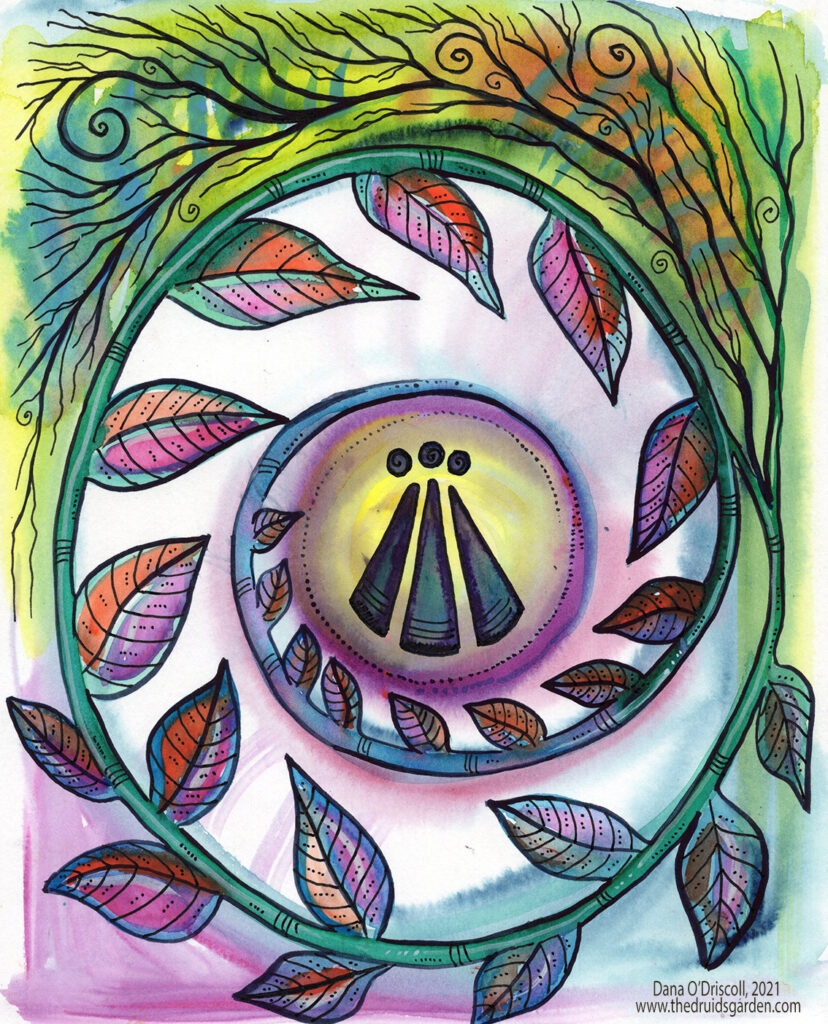 I’ll be writing today from the perspective of AODA (Ancient Order of Druids in America), and OBOD (Order of Bards, Ovates, and Druids), the two druid orders that I am an advanced member of. I’ve been an anmist, bioregional druid for almost 20 years, having completed the studies in both orders. I’ll share a bit about my background to frame my discussion over these next few posts: I’m currently the Grand Archdruid in the Ancient Order of Druids in America, and along with three other archdruids, are responsible for all aspects of the AODA, including developing and reviewing our curriculum, overseeing the mentoring of those working through the order, our initiations, chartering groves, and just generally supporting all of our order’s members along their paths. At present, I am the only Ollave in the AODA, which is a special title reserved for someone who has completed adept studies in all three branches: bard, ovate, and druid, a title I received in January 2020. I am also a Druid Grade member of OBOD, having completed my Druid studies in 2013. Since that time I’ve served as the OBOD 2018 Mount Haemus scholar and have been heavily involved in our OBOD druid gatherings on the East Coast USA, including being involved in writing and leading major rituals at gatherings, facilitating initiations, and so on. I think being in the druid tradition as long as I have and in so many different roles has allowed me to understand it on a deep level, and that’s part of what I want to talk about today. So let’s talk about these three paths, where they come from, and how we can begin or deepen a relationship with them.
I’ll be writing today from the perspective of AODA (Ancient Order of Druids in America), and OBOD (Order of Bards, Ovates, and Druids), the two druid orders that I am an advanced member of. I’ve been an anmist, bioregional druid for almost 20 years, having completed the studies in both orders. I’ll share a bit about my background to frame my discussion over these next few posts: I’m currently the Grand Archdruid in the Ancient Order of Druids in America, and along with three other archdruids, are responsible for all aspects of the AODA, including developing and reviewing our curriculum, overseeing the mentoring of those working through the order, our initiations, chartering groves, and just generally supporting all of our order’s members along their paths. At present, I am the only Ollave in the AODA, which is a special title reserved for someone who has completed adept studies in all three branches: bard, ovate, and druid, a title I received in January 2020. I am also a Druid Grade member of OBOD, having completed my Druid studies in 2013. Since that time I’ve served as the OBOD 2018 Mount Haemus scholar and have been heavily involved in our OBOD druid gatherings on the East Coast USA, including being involved in writing and leading major rituals at gatherings, facilitating initiations, and so on. I think being in the druid tradition as long as I have and in so many different roles has allowed me to understand it on a deep level, and that’s part of what I want to talk about today. So let’s talk about these three paths, where they come from, and how we can begin or deepen a relationship with them.
The Three Paths of Druidry: Ancient and Modern
Our understanding of these three ancient divisions of Gaulish culture comes from a variety of historical sources. The first mention of the three comes from the writings of Strabo, in his Geographica, which was written about around 20 CE. He describes three ancient divisions: the bards (Bardoi) who kept the community’s histories through stories, poetry, and songs; the ovates (o’vateis) who were what we might call shamans today, connecting deeply to the natural world, the healing arts of plants, and who were seers, prophets, diviners, and who worked with plants and healing; and the druids (druidai) who were “moral philosophers”, leaders, astronomers and kept the laws. Since I like to quote and read original sources, here’s one of the passages from Geographica, book IV section 4, “Amongst [the Gauls] there are generally three divisions of’ men especially reverenced, the Bards, the Vates, and the Druids. The Bards composed and chanted hymns; the Vates occupied themselves with the sacrifices and the study of nature; while the Druids joined to the study of nature that of moral philosophy. The belief in the justice [of the Druids] is so great that the decision both of public and private disputes is referred to them; and they have before now, by their decision, prevented armies from engaging when drawn up in battle-array against each other. All cases of murder are particularly referred to them. When there is plenty of these they imagine there will likewise be a plentiful harvest. Both these and the others assert that the soul is indestructible, and likewise the world, but that sometimes fire and sometimes water have prevailed in making great changes.” Beyond Strabo, there are a number of good books that cover the present scholarship on the ancient druids, including work by Ellis The Druids (1994) and Hutton (2007).
I often get asked questions about why the modern druid tradition varies somewhat from these ancient paths, and my response is that we vary because times and cultures are different–the ancient bards, ovates, and druids were supporting an entire culture and way of life for large groups of people. Modern druid orders are still small, still scattered, and we are religious minorities in most places where we live. Most of the ancient tradition has been lost, with only a smattering of original writing (like above), primarily written by the Romans, who were the enemies of the druids. Thus, we don’t have a great deal to work with and at least in the druid revival, we’ve set about building a tradition inspired by the ancients that is applicable today. And that’s an ever-evolving challenge!
The other thing to understand about these three core paths of druidry is that different modern druid orders interpret the paths somewhat differently. Here is a chart that can help us understand the ancient and modern distinctions of the Ancients (based on Strabo and other sources), AODA’s interpretation, and OBOD’s interpretations:
| Name | Ancients | AODA | OBOD |
|---|---|---|---|
| Bard | Poetry, history, songs, stories, traditions | All creative arts and the flow of awen | All creative arts and the flow of awen |
| Ovate | Nature, cycles of nature, herbalism, divination, spirits, working with the dead, sacrifices to the gods | Nature, cycles of nature, nature knowledge, herbalism and the metaphysical aspects of nature | Nature, cycles of nature, herbalism, divination, working with spirits |
| Druid | Astronomy, astrology, law, customs, religious traditions and rites, knowledge | All metaphysical studies and occult knowledge: magic, divination, ritual, astrology, etc. | Leadership, magic and advanced occult knowledge, ritual, astrology |
What is fascinating about this list is that nearly everything that you could want to do in terms of nature-based spirituality and earth-honoring living is present in the list above and fits somehow into these three categories, or straddles more than one. These paths offer infinite variation and possibility–even just committing to one offers a lifetime of possibility. Weaving two or three together represents a deepening in very powerful ways (I’ll talk about this more in my next post).
As a mystery and wisdom tradition, there is no end to learning. We keep deepening our understanding, moving into deeper practices, or even adding supplementary areas to deepen and strengthen our practice. And for some, learning different things is important, and they focus on breadth rather than depth. Whatever it is, one of the benefits of these paths is their encouragement to keep walking and deepening the practices.
The graphic I created below is specific to how AODA defines these paths.
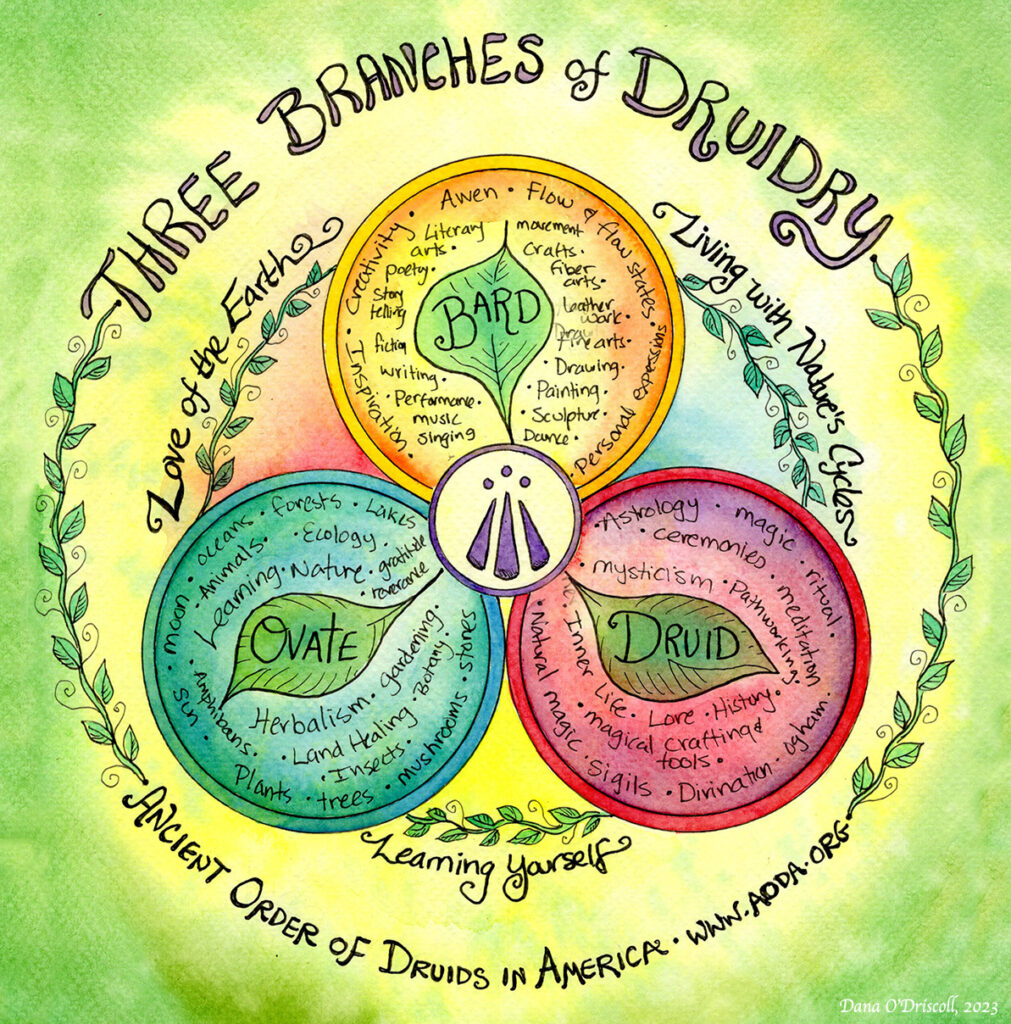
In druid orders: In addition to how these paths manifest, different druid orders teach and practice them in unique ways, which again, contributes to this idea of a learning journey. Both OBOD and AODA have a three-tiered system of study. For AODA, this is the three degrees: Apprentice, Companion, and Adept. At each stage of your journey, you can choose which area(s) to specialize in: so you might choose to explore the bardic arts in your Apprenentice studies, and later earn the title of Bard Apprentice. For your Companion studies, you decide to delve deeply into nature and the world around you and become an Ovate Companion. And you can always study in more than one area. Thus, at each stage of our curriculum in AODA, you essentially choose a path (or set of paths) that interests you and that you want to explore further within the above divisions. OBOD works differently–the three paths are laid out in the following order: Bard (first year of study), Ovate (second year and a half of study), and Druid (third year of study). At each stage, you study the different curricula that are sent to you relating to Bardic arts (which includes not only storytelling and creative expression but also the nuts and bolts of magical thinking and psychological work through the elements). You then move on to the studies of divination, nature, and spirits through Ovate, and end with studying leadership, magic, and astrology in the Druid Grade. Thus, one way to get immersed in these different paths is to explore them through a druid order–or several druid orders!
Paths, Perspectives, and Identities
These three paths, as I’ve been calling them are actually much more than paths. In the druid tradition, these are used in a wide variety of ways, and people’s relationships with the paths change over time as they grow more into their spiritual practices. Different druids may think about them differently or in multiple ways. Here are a few of the ways that people express and think about these paths:
Bard-Ovate-Druid as a Practice. In line with how we think about these in druid order curriculum, first and foremost, these three paths are sets of practices that we regularly do. If you are learning mushrooms as an ovate, you are out in the woods finding mushrooms, bringing them home, taking spore prints, and maybe if you are lucky, also enjoying a tasty meal. These are ultimately things we do: meditations, pathworkings, sigil creation, and other practices as a druid; making compost, identifying plants, or growing herbs for medicine as an ovate; and painting, drawing, or songwriting as a bard.
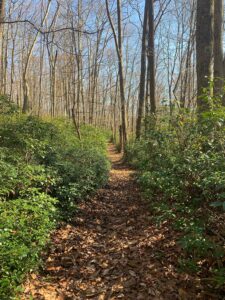
Bard-Ovate-Druid as Perspective. Another really useful way to see the three paths as you are getting started is that you can see these paths like “lenses” through which to view and experience the world around you–ways of seeing, interacting, and connecting with the broader landscape as well as your inner landscape. Let’s take something simple like a tree. As a bard, I might spend time with the tree so that I could compose a song or poem in honor of the tree, or sit under the tree with my sketchbook, sketching the life at the roots of the tree. As an ovate, I might learn about the tree’s role in the ecosystem and the identifying features of the tree; I might also learn how to create cordage from the inner bark of fallen branches and also offer gratitude. As a druid, I might seek to do a spirit journey with the tree and learn the inner mysteries, craft sigils from the tree’s wood, and meditate or do rituals under the tree. This tree allows for a richness of experience based on the path that you want to express and explore. And literally, everything in the world is just like this–I can always shift my perspective to explore the world as an ovate, as a bard, or as a druid.
Bard-Ovate-Druid as Journey. But saying that these are things or we can see these perspectives only begins to scratch the surface of what the paths offer. The reason I’m using the term “path” is that that term also refers to a journey, and for any of us who dedicate ourselves to the practices, we are also on a journey. We are all learning these paths, walking them, and deepening our practice. These are always a journey from being a novice and gaining experience, and for some, moving into expertise. The more you practice and learn, the more you grow, and the more you can see how far you’ve come. People are often amazed when they start a druid journey as to how far they can come even in a single year, or through the course of study with a druid order. People are amazed that simply making the commitment to keep walking the path leads to so many insights and rich rewards–and it certainly does. I saw this very clearly with my Mt. Haemus study of those practicing bardic arts–people used the bardic arts not only to deepen their own creative practices but also to establish or reclaim identities–which brings me to my final point.
Bard-Ovate-Druid as Identity. Another way that these paths are often expressed is through people taking on one or more identities as a core part of who they are. Thus, you aren’t just practicing or walking a path, you are embodying that path. This may mean that by taking up a path, you are reclaiming or finding a name for who you are already (I can’t tell you how many people say this when they send in their application for AODA — they talk about coming home and finding a term to call themselves). You are not just practicing a druid path, you are a DRUID! The act of naming yourself, of claiming that identity, is quite powerful and liberating, especially if you’ve been seeking for a long time.
Sometimes this also helps us in the community know a bit more about who you are or how you align. For example, You meet people at druid gatherings who introduce themselves as part of that identity–“I’m really an ovate”, or “I’m the dedicated bard.” These refer to the deep affinities they have with the particular practices they have developed on the path–with some people committing themselves to one or more of the paths and taking that on as part of their core identity, perspective, and interaction with their spiritual life and the world around them.
Getting Started on the Paths
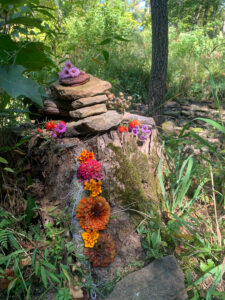
A big part of joining a druid order or practicing druidry is finding your way along these various paths. This is less of a problem if you join an order like OBOD, which lays it all out for you. It’s a much more interesting choice in AODA, where you are encouraged to build your own path forward by finding what interests you. But even if you are in an order that prescribes more of the journey, there’s always plenty of opportunity to go beyond the course and explore other related areas that interest you. So how might you get started?
The most important advice I can offer is threefold: A) give yourself a chance to explore the three paths and possibilities; B( trust your intuition; C) realize that you don’t have to do everything at once. When you are just starting out, spend time exploring what different people have already done in the tradition and what might appeal to you. It can be helpful to talk to others further along the path or really take time to think about what you would like to do. Consider: who do I want to be? What do I want to get out of this path? Why do I want to grow? I also suggest that while it is a good idea to gravitate towards what appeals to you, sometimes taking an opposite path into an unexpected area can also yield fruit! The second suggestion is to trust your intuition and gut feelings. When you find a path that feels right, go with that and pursue it fully. If you already have something that is strongly calling to you, trust that intuition.
The third suggestion I have, especially for those who are new to the path, is not to think you have to do everything at once. Realize that this is a path, and it is a journey. The journey is the fun part, not the destination. It’s okay to have too many things you are interested in or want to do–you will get to those things over time. You don’t have to do everything at once, and trying to do too much can lead to a less rich experience.
If you join a druid order, the orders will also share a lot about the specifics. For example, I co-authored most of what is in AODA’s New Candidate Guide, which is sent to every new member, and has chapters on each of the paths and ideas to get started.
Conclusion
If you practice druidry, I am wondering how you might envision these three paths in your life? How do you see the paths weaving together? What challenges did you face in taking up one or more of the paths? What wisdom can you offer?
News and Announcements
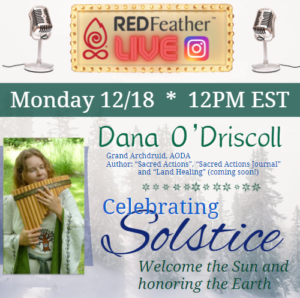 Instagram Live on RedFeather: I will be doing an Instagram Live with Crystal Mannara, the Director of REDFeather at 12pm EST on Monday, Dec 18th. We’ll be talking about my upcoming Land Healing book as well as how to celebrate the winter solstice and consider dimensions of care and self-care at this darkest time of year. You can check it out by visiting RedFeather’s Instagram page: https://www.instagram.com/redfeather.mbs/
Instagram Live on RedFeather: I will be doing an Instagram Live with Crystal Mannara, the Director of REDFeather at 12pm EST on Monday, Dec 18th. We’ll be talking about my upcoming Land Healing book as well as how to celebrate the winter solstice and consider dimensions of care and self-care at this darkest time of year. You can check it out by visiting RedFeather’s Instagram page: https://www.instagram.com/redfeather.mbs/
Land Healing book: Preorders are available for my forthcoming Land Healing book, which will be released March 28th, 2024–links on this page. Please consider supporting my work through preordering my new book!
Blog on Hiatus: I will be taking my regular hiatus from blogging from now until late January. I always go on my yearly spiritual retreat Jan 1-10 and take some time in this quiet and dark time of year to rest, attend to my own spiritual practices, and plan for the year to come. Blessings of the winter solstice to all of you!




Humanity in a state of imaginary-separation, characterised by fear-driven superstious-belief, is the only ‘mystery’-of-the-Cosmos.
Enlightenment-of-understanding beckons, Dana.
Be trurned from earthly-orientation, just one-degree is enough, to glimpse the reality of the true-YOU burgeoning to come forth, and reveal the truth-of-love to an otherwise dying-world of make-believe.
You’ve nothing to lose, and all the things you hold dear, that are true to the truth-of-love, will still be manifest, when all the dross is washed away by truth, revealing the Golden-Bowl that overfloweth with heavenly-blessings
Hi Pet, nice to hear from you. I completely agree that the separateness of humans and nature in all her forms (here on earth or in the greater cosmos) is the big challenge we have in the world. Blessings to you this solstice!
Dana I can’t thank you enough for your writings and teachings on Druidry. I’m an independent practitioner following my own path of inspiration learning from a global perspective of indigenous and shamanistic practices and cultures. You are such a great teacher for me on my path. May you rest well in your cave and relax and experience deep quiet. Thank you so much.
Hi Mollie, thank you so much for your kind comments. Glad you find my writings helpful :). Blessings too you too as the wheel continues to turn!